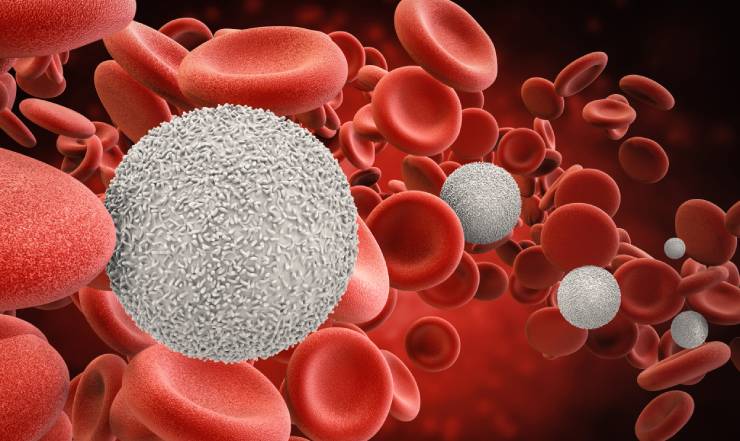Ficoll is not Fickle: Reliable Isolation of PBMCs From Whole Blood
From autoimmune diseases to neurological conditions to pathogenic infections, researchers studying associated immune-mediated mechanisms hope to uncover novel modulatory approaches for therapeutic intervention. To that end, purified human peripheral blood mononuclear cells (PBMCs) represent a heterogeneous population of cells, including B cells (~15%), T cells (~70%), monocytes (~5%), and natural killer (NK) cells (~10%) that can provide valuable phenotypic and functional information.1
But many factors influence PBMC purification quality. Contaminating cell types, altered ratios, and varying cell viability can result from inconsistent or sub-optimal PBMC isolation methods, negatively impacting your ability to interpret results and make reliable conclusions.2 Following in-home blood collection, our sample processing protocol for PBMC isolation is carried out in a central laboratory and is standardized to maximize reproducibility, quality, and yield across all samples collected for each study.
Delivering the Industry Standard
The Ficoll method is the industry standard for high-quality PBMC purification, allowing for a high yield with minimal contamination from other cell types. Isolation is performed via a density gradient medium and a broadly standardized protocol.3 The entire process requires several hours of time and takes advantage of each cell type’s difference in density to allow for fractionation between mononuclear cells and other blood components.
Briefly, anti-coagulated-treated and sufficiently diluted blood samples are carefully layered over a density gradient medium such as Ficoll-Paque™ resin to reduce intermixing (Figure 1, left). Careful centrifugation for 30–40 minutes results in three distinct layers (Figure 1, right):
- Erythrocyte aggregates in the bottom layer
- Granulocytes accumulate directly above the bottom layer
- PBMCs found in the interface between the plasma and Ficoll
Following centrifugal separation, the PBMC population is carefully removed from the fractionated gradient and washed several times to remove trace amounts of platelets within the layer.

Long-Term Cell Viability and Function
Our standardized protocol is used for a wide range of blood sample volumes to produce highly concentrated PBMC samples. Typically, a 75 mL blood donation yields 50–75 million PBMCs; however, yield can be influenced by disease type and the person’s general health. Following PBMC isolation, cryopreservation (50% RPMI, 40% FBS & 10% DMSO) allows for long-term viability and integrity of all cell types in the PBMC sample population for future analyses. Though, to protect against loss of cell viability and function, careful thawing protocols and an overnight cell culture recovery period should be performed.
We strive to produce at least 90% post-thaw cell viability for all samples that are ready for downstream applications such as further cell type-specific selection techniques, and gene expression or biomarker profiling analyses.
Our central and standardized processing protocol produces the highest quality PBMC population to meet your research goals while eliminating variability and inconsistency concerns that often plague the reproducibility of research studies. Analyzing PBMC cell populations can reveal valuable mechanistic information related to immune function in a range of disease states. We’re well equipped to consistently purify PBMC populations for a broad array of applications across many research disciplines.
References
- Autissier P, Soulas C, Burdo TH, Williams KC. Evaluation of a 12-color flow cytometry panel to study lymphocyte, monocyte, and dendritic cell subsets in humans. Cytometry A. 2010;77(5):410–419.
- Posevitz-Fejfár A, Posevitz V, Gross CC, et al. Effects of blood transportation on human peripheral mononuclear cell yield, phenotype and function: implications for immune cell biobanking. PLoS One. 2014;9(12):e115920.
- Böyum A. Isolation of mononuclear cells and granulocytes from human blood. Isolation of mononuclear cells by one centrifugation and of granulocytes by combining centrifugation and sedimentation at 1 g. Scand J Clin Lab Invest Suppl. 1968;97:77–89.